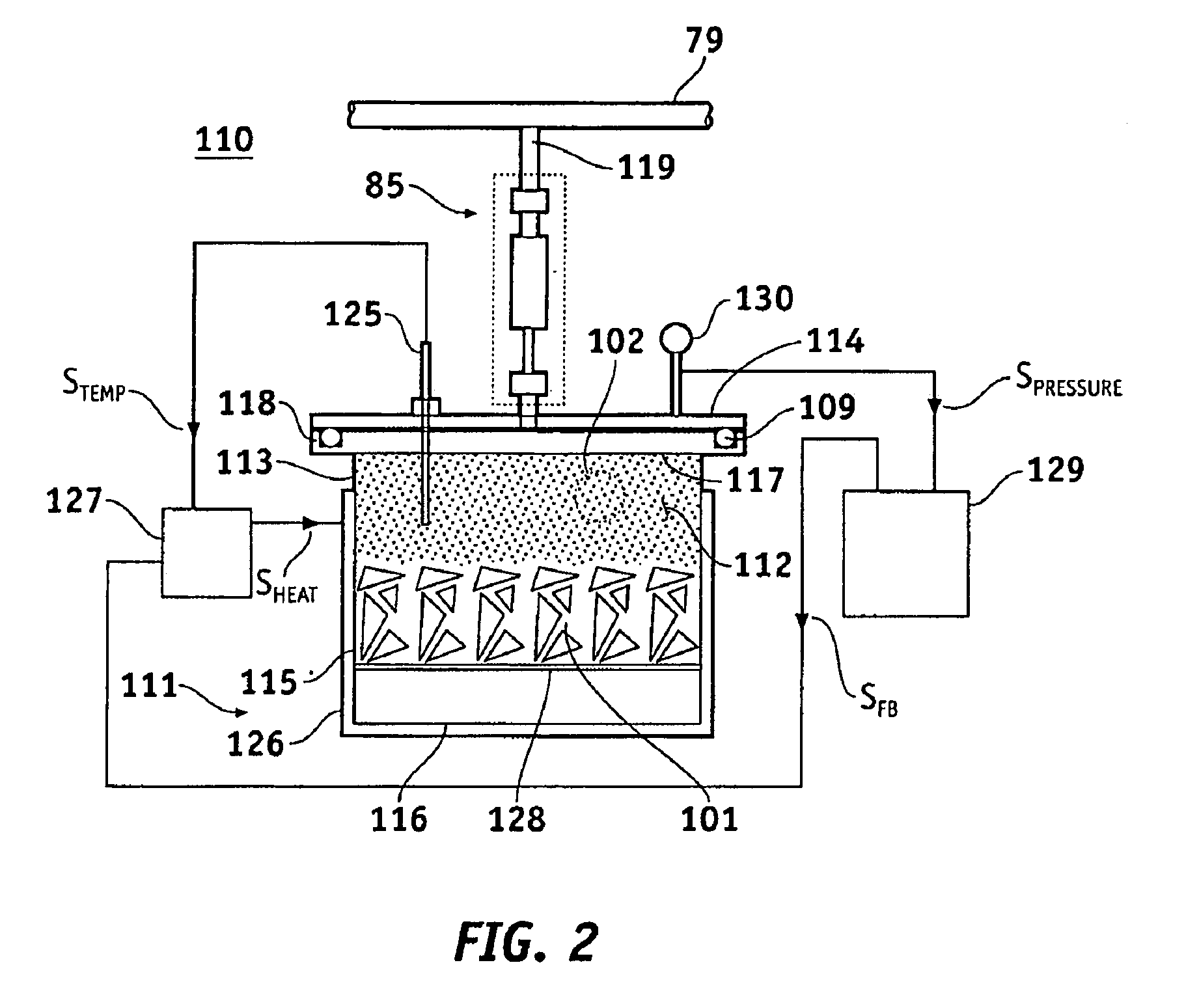Formation of photoconductive and photovoltaic films
a technology of photovoltaic films and photoconductive materials, which is applied in the direction of vacuum evaporation coating, transportation and packaging, coatings, etc., can solve the problems of low device yield, the deposited lead salt material may not adhere to the substrate properly, and the deposition method has several problems, so as to achieve enhanced chemical vapor deposition
- Summary
- Abstract
- Description
- Claims
- Application Information
AI Technical Summary
Benefits of technology
Problems solved by technology
Method used
Image
Examples
Embodiment Construction
[0033]While exemplary embodiments are described herein in sufficient detail to enable those skilled in the art to practice the invention, it should be understood that other embodiments may be realized and that logical electrical and mechanical changes may be made without departing from the spirit and scope of the invention. Thus, the following detailed description is presented for purposes of illustration only.
[0034]Turning now to the drawings, in which like reference characters indicate corresponding elements throughout the several views, attention is first directed to FIG. 1 which shows a simplified diagram of a deposition system 10 in accordance with the present invention. Deposition system 10 allows the deposition of separate material regions onto a substrate by sputtering and plasma enhanced chemical vapor deposition (PECVD) without undesirably exposing them to the outside atmosphere in between depositions.
[0035]Some of the material regions can include lead salt materials such ...
PUM
| Property | Measurement | Unit |
|---|---|---|
| atmospheric pressure | aaaaa | aaaaa |
| pressure | aaaaa | aaaaa |
| temperature | aaaaa | aaaaa |
Abstract
Description
Claims
Application Information
 Login to View More
Login to View More - R&D
- Intellectual Property
- Life Sciences
- Materials
- Tech Scout
- Unparalleled Data Quality
- Higher Quality Content
- 60% Fewer Hallucinations
Browse by: Latest US Patents, China's latest patents, Technical Efficacy Thesaurus, Application Domain, Technology Topic, Popular Technical Reports.
© 2025 PatSnap. All rights reserved.Legal|Privacy policy|Modern Slavery Act Transparency Statement|Sitemap|About US| Contact US: help@patsnap.com



